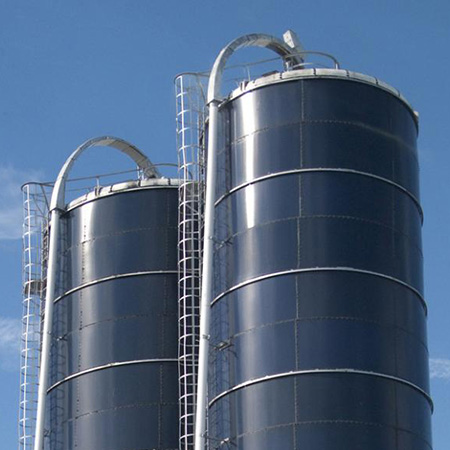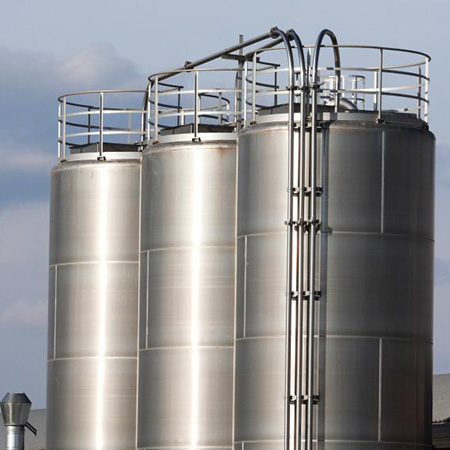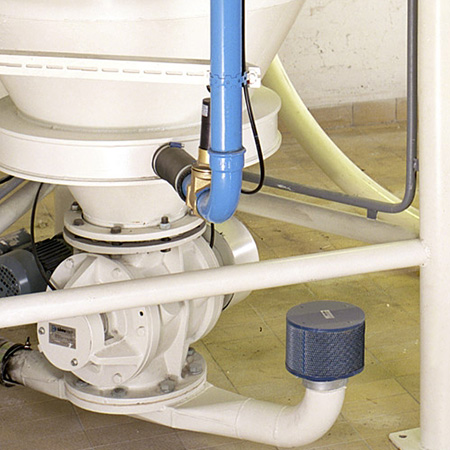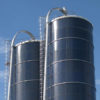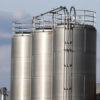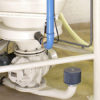Pneumatic Conveyance
Services
- turnkey pneumatic conveying systems,
- upgrading of existing systems,
- explosion protection of pneumatic conveying systems,
- preparation of ATEX compliance documents,
- manufacture of components for pneumatic conveying systems.
0
Pneumatic conveyance
Pneumatic conveying systems are used to move dry bulk materials from one location to another by a combination of pressure differential and the flow of air.
Major pneumatic system components include:
- feeder / unit for suspending bulk solids in the conveying air; typical gear includes: transporters, rotary airlock valves and injectors; the motive force is supplied by an air mover, such as a fan, compressor, exhauster or a regenerative blower
- custom-designed conveying lines to move the product through; basic components include: thick-walled tubing and bends shaped to reduce wear with appropriate terminations (flange or EURAC), diverter valves or air injectors
- receivers providing material-from-air separation using cyclones, cyclone filters and/or air filters
Explosion safety
Conveying dry bulk solids is fraught with potential explosion hazards. It is therefore necessary to take some basic safety measures in order to reduce the risk. This is an obligation under the Minister of Economy Decision on minimal health and safety requirements in the workplace where explosive atmospheres may occur. (J.O.L. of 10/07/2013). In practice it boils down to the following series of activities:
- assessment of risks arising from explosive atmospheres plus identification and marking of explosion hazard zones,
- implementation of explosion protection measures, such as: use of equipment certified to work in relevant explosion zones, potential equalisation bonding and grounding, use of air-tight or inert gas systems,
- deployment of certified explosion protection equipment (explosion suppression, venting or isolation).
Vacuum conveying system
The basic components of a vacuum (aka suction) conveying system are located at its receiving end. These may include a vacuum generating unit (vacuum source), a separator to filter off the conveying air and air intake. A number of feeder solutions may be used to suite different product properties, such as injectors, venturis or rotary airlocks. This type of conveying is best suited for small to medium system capacities and distances. Its one major advantage is no dust emission, even if there are leaks in the system (vacuum sucks air inside).
Pressure conveying systems
In contrast to vacuum conveying systems, a pressure-type system has its air moving unit (pressure source) plus air intake located at the beginning of the line whilst separation of product from the conveying air is done at its end. A rotary valve or a transporter can be used for feeding purposes to suit the customer’s requirements (conveying capacity, distance and type of material to be moved). Pressure conveying systems can be used to transfer almost any type of dry bulk material, including explosive products.
Services of other companies of the WOLFF Group:
- creating documents required by Atex Directives, including: the Risk Assessment Document and the Explosion Protection Document (more at www.atex137.pl)
- explosion and pressure protection of process equipment (more at www.tessa.eu)



